How to use Google Trends? The Ultimate Guide
Google Trends is arguably one of the most important sources of open data on the Internet. Google Trends is not a tool that is unique to advertisers. You’ll find a lot of research and study articles that have been produced thanks to this great resource.
So, what’s with Google Trends? Well, in this guide, we ‘re going to cover what Google Trends is (if you don’t already know it), get you familiar with the Google Search Trends interface, and show you how to make the most out of this well-known Google tool. Now, let’s jump right into the details.
What is Google Trends?
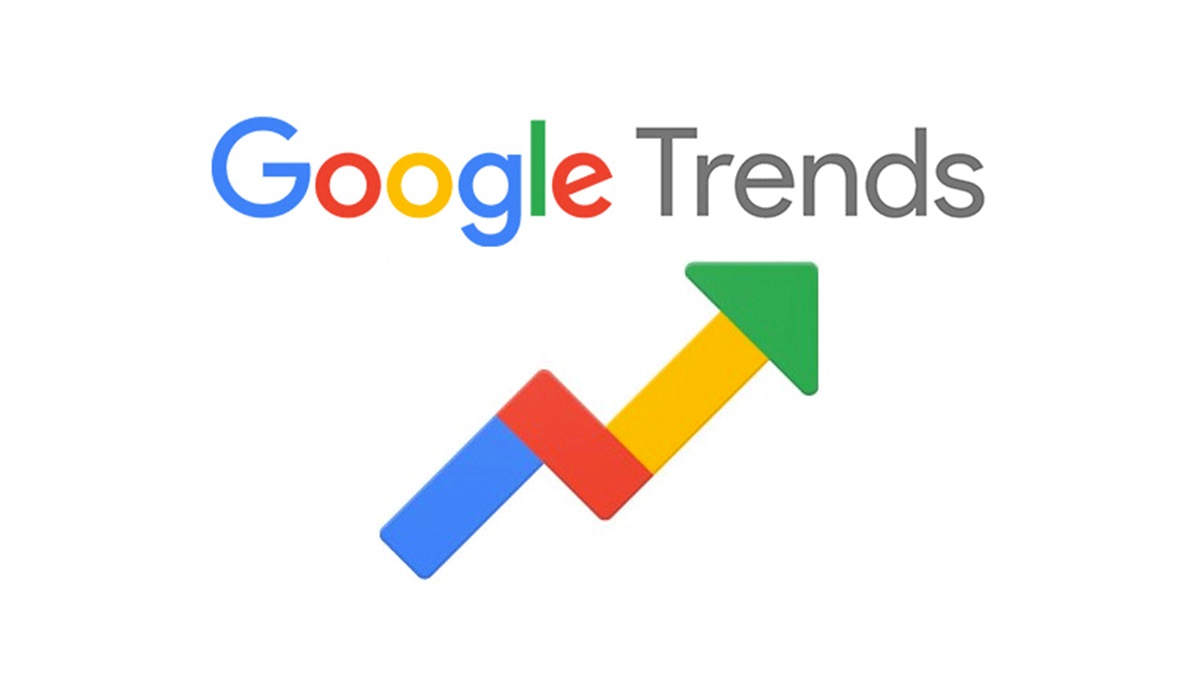
Google Trends is a trend-identifying tool that demonstrates the popularity of a search word on Google. You will see if the trend is rising or decreasing. You can also find lots of valuable information such as demographic insights, related topics, and related queries to help you better understand Google’s trends.
How to Use Google Trends?

Use Google Trends To Find trending topics in your niche
Keeping track of keywords on Google Trends will help you stay on top of any newsworthy event that is relevant to your business niche. If you’ve recently seen a hot story, you will definitely be able to find it in the “Trending Searches” section of the Google Trends, which can be accessed from the left sidebar.

This segment includes two smaller sections, Daily Search Trends and Real-time Search Trends. The Daily Search Trends tab shows you 20 of the most searched keywords on the current day, the previous day, and so on. Just press the “Load button” to view historical results at the bottom of the page. You may also extend the search term that you are interested in to obtain comprehensive information, as shown below.
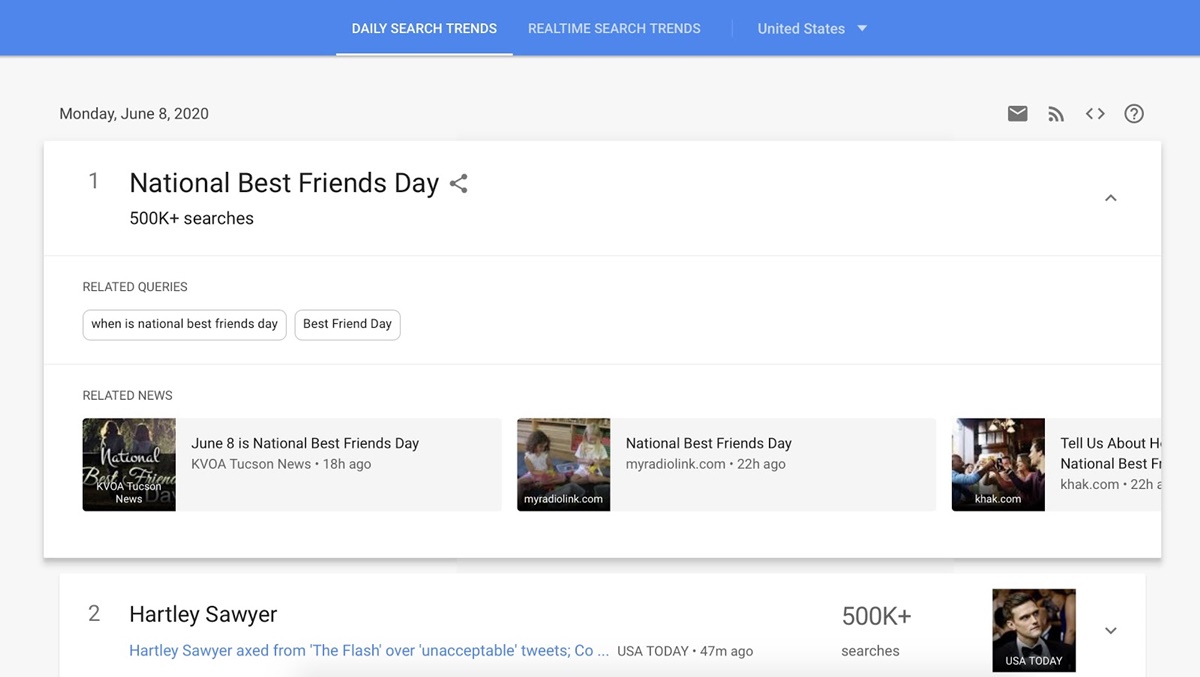
Right next to every popular search term, you can see its search volume and related information. This means that Google Trends doesn’t just inform you of what topics are currently in the news, but it also gives you plenty of contexts.
You can check out articles published by various media and see which events have given rise and people’s interest in the keyword. For example, the actress received a prestigious award and people started searching for her name. In addition to the titles of the article, you can also know exactly when they were published. If the story was published a while ago, make sure it has not lost its appeal before producing a similar piece of content.
To see trends that are just emerging, go to the Real Time Search Trends tab. Here you’ll find stories reported only a few hours ago. When extended, each search word comes with a graph that shows whether or not the interest in the news is that or is already fading away.
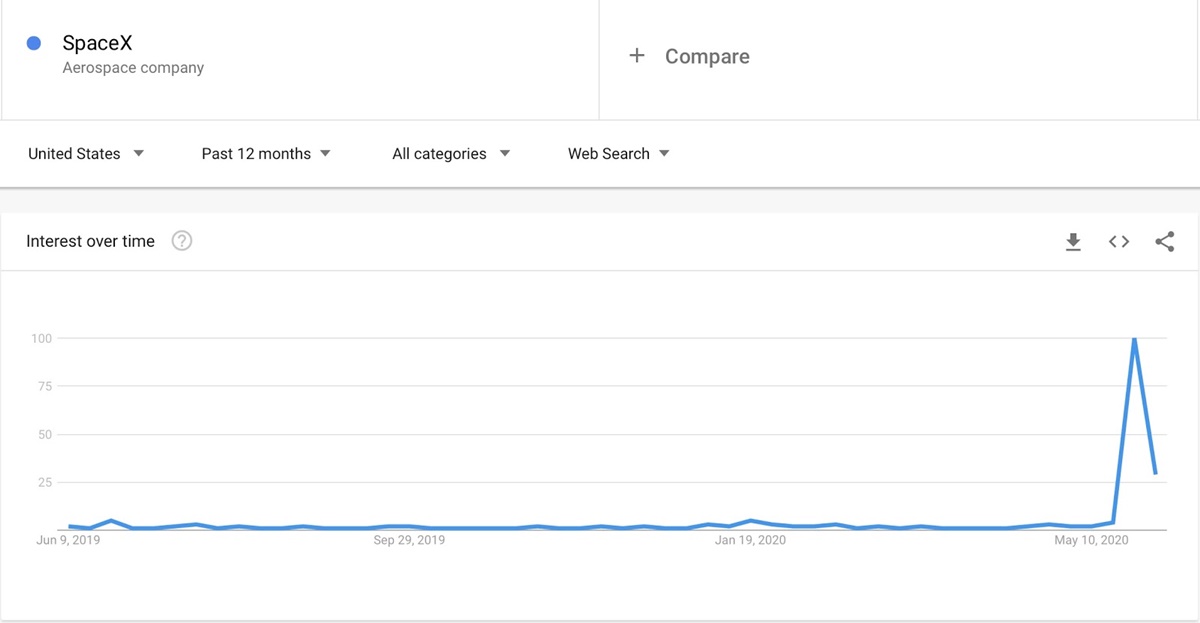
In addition, you can select the type of query you ‘re interested in. However, the option is very limited: you have industry, entertainment, health, technology, and sports categories to choose from. But don’t worry if your niche doesn’t fall into any of the categories listed above. You can still draw some insights on the topic from Google Trends, but you’re just going to have to do it in a different way. This brings me to the next point.
Use Google Trends To Do Keyword Research
Browsing through the Trending Searches section of the Google Trends website can often give you no results. Your business niche may be too narrow, or news related to your company may not result in the top 20 results.
So, if you haven’t found any ready-made suggestions for some reason, go to the Explore section of the Google Trends section, which can be accessed via the left sidebar. It keeps information on all search queries with a search volume greater than zero, so you’ll certainly find some keyword ideas here.
To get started, input your seed keyword into the search box at the top of the Google Trends interface, and look for the Related topics and Related queries tabs that are at the very bottom of the Explore section.
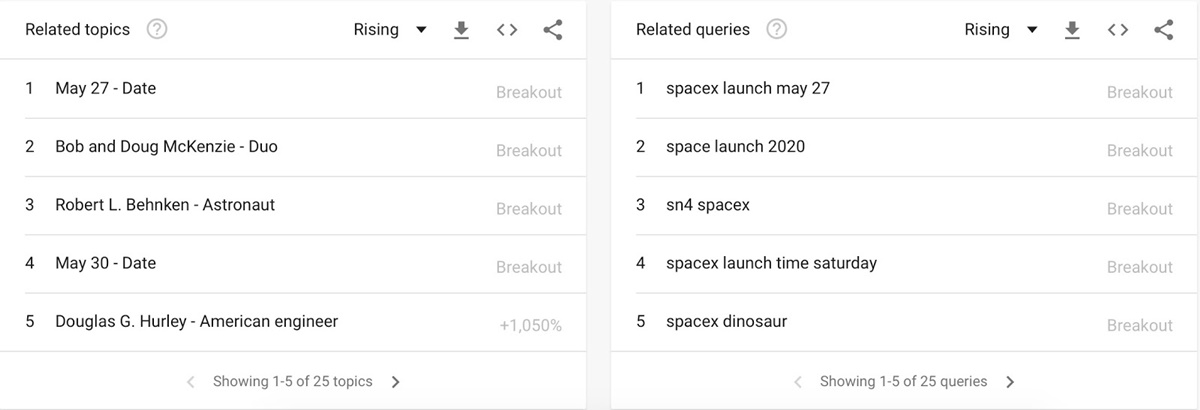
There are different filters that you can use to get the most relevant results:
- Once you type your search keyword in the search box, you can choose whether to discover it as a theme/category or as a search phrase. I’d recommend you to go for the first option because you might get some irrelevant keyword suggestions. For instance, if you choose “fashion” as a search term and not as a theme, keywords such as A Christmas in Royal Fashion (which is the name of a film) will appear among the related themes.
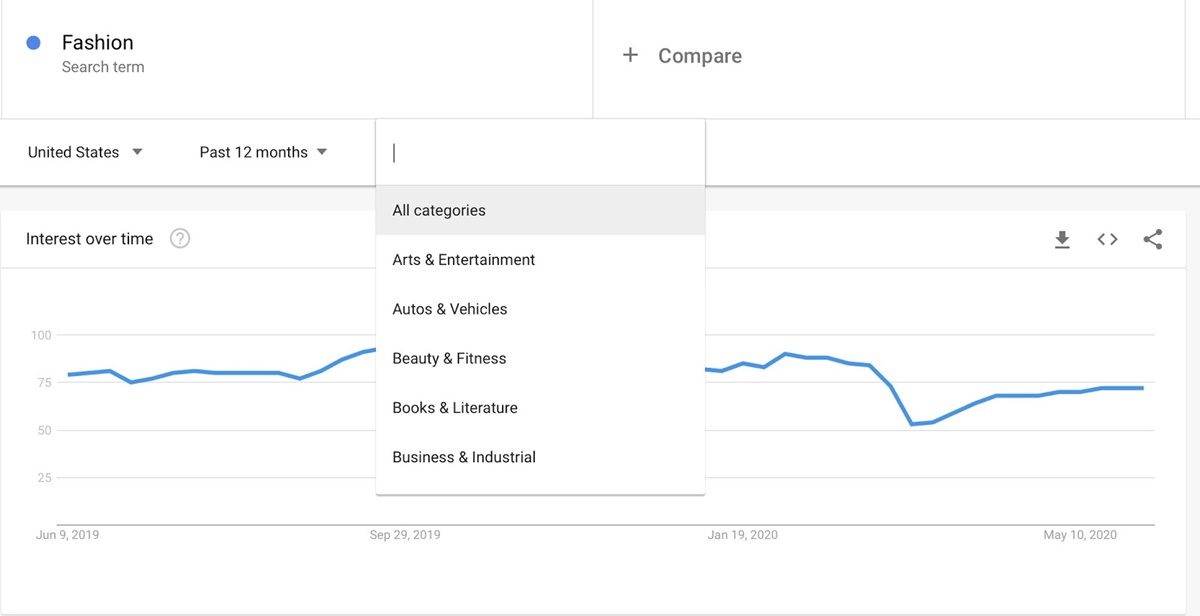
- You can also choose the time span that works best for your query. By default, Google Trends has been analyzing for the last 12 months, but there are many other options available that range from “last hour” to “since 2004.” For our fashion theme example, you ‘re going to want to get insights into recent news, which means that you can pick a time period between the last few hours and a week.
- You can also limit your search to a specific category or subcategory in the suggested list. You’ve got 25 categories with multiple subcategories to choose from.
Be creative with your original keywords to make your keyword research a success. You can start with a broad search term like fashion, but you’re going to have to get more specific and dive into some narrower terms as well as good theme ideas. For example, fashion media outlets often write about high-end expensive designer clothing, so exploring the term “haute couture” can be a good idea.
With Google Trends, you can even learn about search terms that are not related to a subject such as “how-to” or “what is” to get keyword ideas. Here you can use the category filter to specify the (sub)category you ‘re interested in and find a list of new trends and topics relevant to your niche.
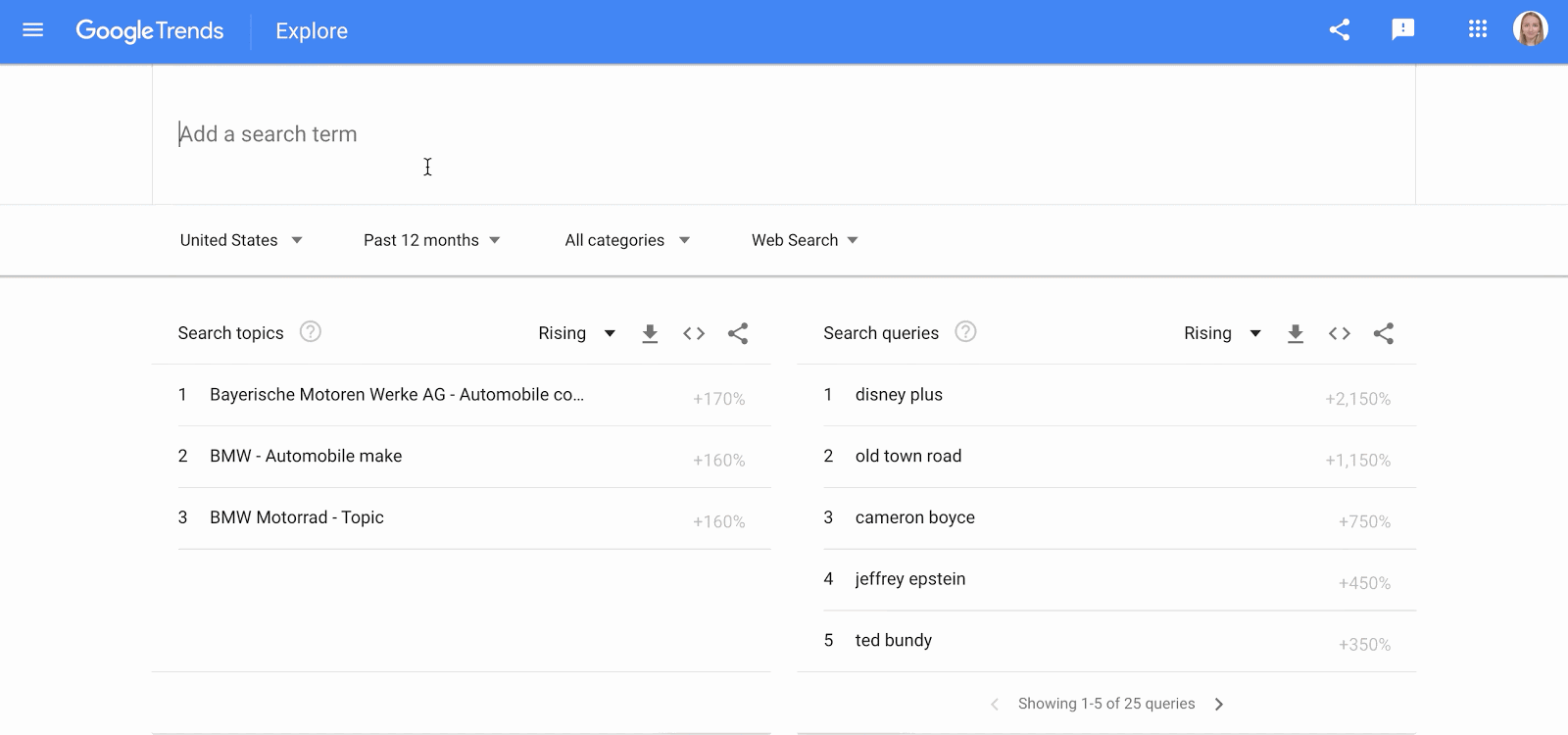
Many keyword research tools on the Internet are not able to update their databases in real-time, which means that they may not have up-to-date data on time-sensitive keywords. As a result, Google Trends can help you uncover keyword opportunities that can otherwise be easily overlooked, such as fast-moving patterns or popular queries.
And yet, I want to emphasize that you should not rely solely on Google Trends for your keyword research needs. Standard keyword analysis methods will benefit you more if your market niche is not subject to fast-moving trends. My advice is to compile a list of keywords, drawing up ideas from all sorts of sources. And once you’ve finished, you can use Google Trends to get all types of insights that will help you keep only worthy keywords on your list.
Use Google Trends To Find And Analyze Keyword Popularity Curves
If you are only interested in keywords that have stable public interests, what you can do is simply enter the keyword into the Google Trends search box, and check out the Interest over time graph.
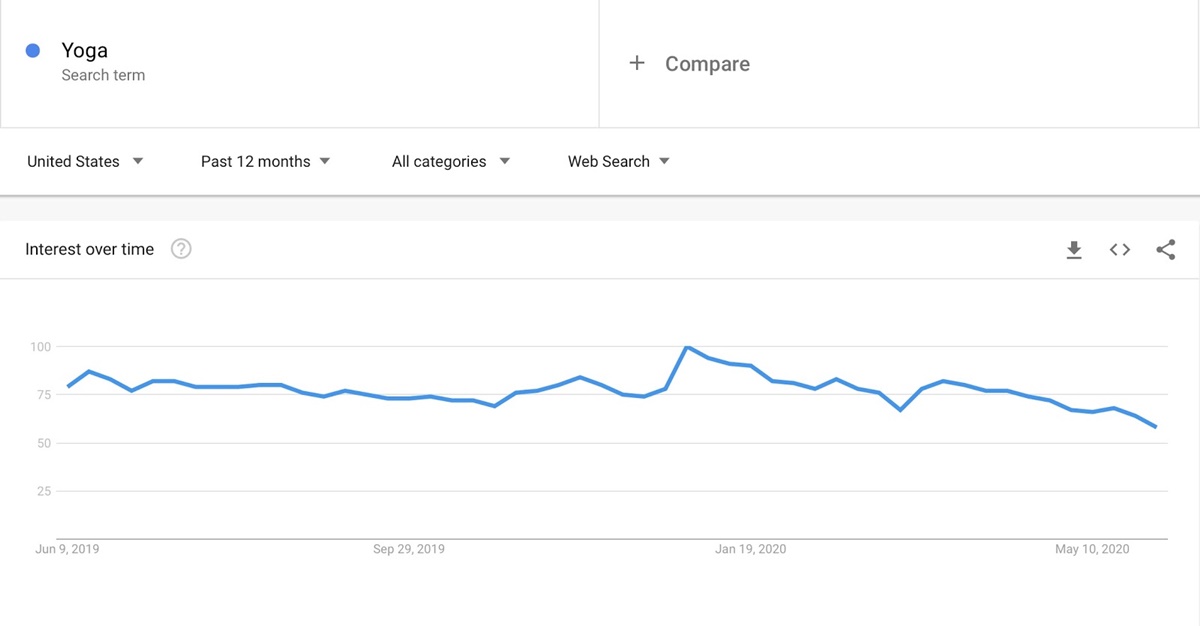
In addition to showing trends on new keywords, the graph can also be used to validate the keywords that you are currently targeting. If you notice that some keywords are starting to bring less traffic, their days of glory are likely to come to an end. Check the popularity graph to find out if your keywords are losing public interest. If so, you ‘re going to have to look for new keyword possibilities.
At times, you may want to go to Google Trends to see a broader picture. And sometimes here I mean when you see a “keyword unicorn”—a keyword whose popularity skyrocketed but soon returned to almost zero. Normally, you may want to remove these keywords, but sometimes what seems like a unicorn may turn out to be a seasonal keyword. And, if you think that is the case, you’re going to have to go to Google Trends and find it out.
Use Google Trends To Stay Updated With Seasonal Fluctuations
In order to analyze seasonality, you will need to switch the default time span set in Google Trends from 12 months to 5 years. That way, you will be able to see if there is a surge in the popularity of a keyword every year at a given time.
Seasonal keywords are not of little use like keyword unicorns, so you can go ahead and keep them on your list. Nonetheless, you may have to view them differently than standard keywords and prepare your marketing strategies with regard to their seasonal existence.
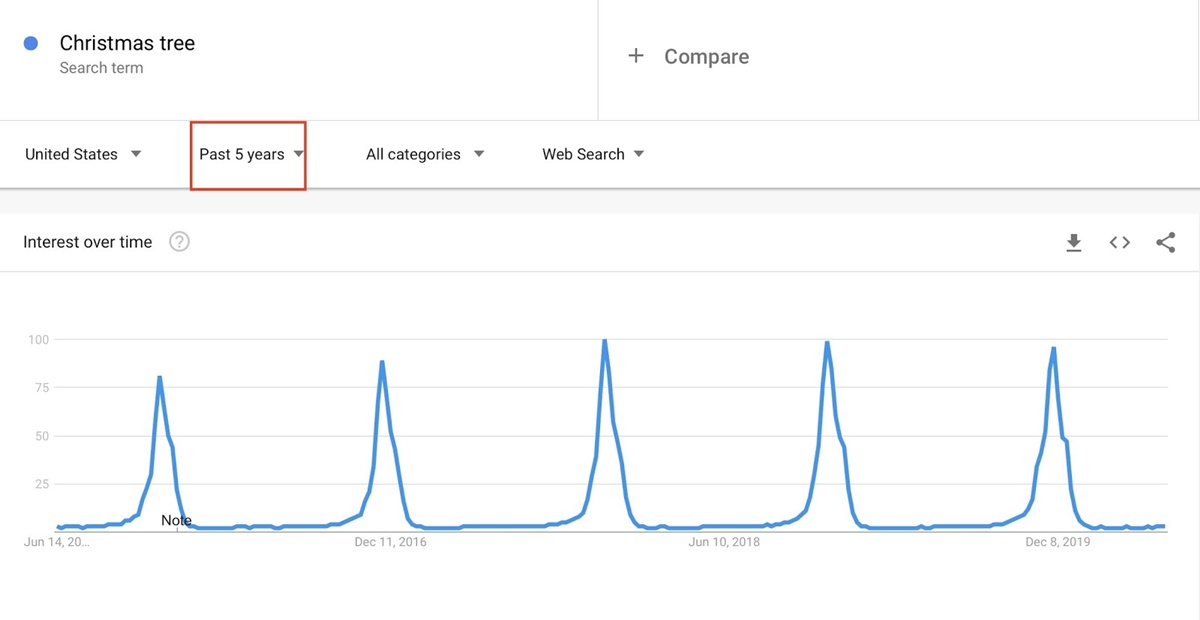
Using Google Trends data to understand when the use of a keyword is increasing. For example, everybody knows that costume rentals are most sought after around Halloween, and people need summer shoes, well, summer shoes. But you can get more reliable data with Google Trends. It will show you that people are starting to look for a Halloween clothing at the beginning of October, or the “Summer Shoes” keyword is starting to get more searches at the end of spring, with the peak observed at the end of May/beginning of June.

To obtain the most relevant results, be precise in your wording, and try to use the search terms used by your customers or readers. Yeah, if you’re selling summer shoes and you don’t write a fashion column about shoe trends, just go to the keyword “buy summer shoes.”
Identifying where the curve of interest starts to grow can help marketers prepare and start their campaigns at the right time. Like, a shoe shop can start advertising summer shoes on Facebook at the beginning of May, which means that they need to adjust their content plan and have all the texts published earlier in April.
Creating and publishing content on the subject that begins to grow before the seasonal interest will also give business time to build some useful backlinks. It is also a good idea to update key content before seasonal peaks, as both users and Google trust fresh content. If you say you ‘re running a travel blog and you’ve got a blog post on a trip to Brazil during the Carnival, it makes sense to publish it in January when interest in the subject begins to grow.
Use Google Trends To Choose The Best Areas TO Target
When you evaluate the popularity of a keyword using traditional keyword research tools, the data you get is the average for the country under analysis. Google Trends is unique in this regard because it gives you a chance to check how interest in your subject varies across the country or even across different cities in the region.
In the time graph, you can find the “Interest by subregion” segment. Here you can check which regions of the country (states for the US) are more interested in the subject. You can click on any of the sub-regions listed in the table to narrow down the location and see from which cities within the state/region the searches originate.

If your service is not location-dependent – such as selling CRM software – you can use Google Trends to determine that your product is in greatest demand in Washington, NY, and Boston. You can then try location-based advertising to target these regions, no matter where you are physically located.
This feature is also useful for businesses whose physical location is irrelevant, but who want to promote location-dependent services. For example, you want to start a review website that will get revenue from affiliate programs provided by yoga retreats, so you need to find out where those centers are most in demand. Google Patterns will encourage you to affiliate with rehabs in D.C., Vermont, Colorado, and Hawaii.
Use Google Trends To Produce Updated Relevant Content
Google Trends uses web search data to evaluate search words in default. But the tool also includes data from Google’s image search and YouTube, which can help you determine which type of content is most popular among users. Some keywords can produce better results when paired with the right content — create a video for your YouTube channel instead of writing another blog post.
If you feel like a search term that you’re interested in can make both a good blog post and a video, take a look at its trend curve under the web search tab and then check out the YouTube search results. Go for the one that looks more promising or build both a blog post and a video if the question is equally common on web search and YouTube.
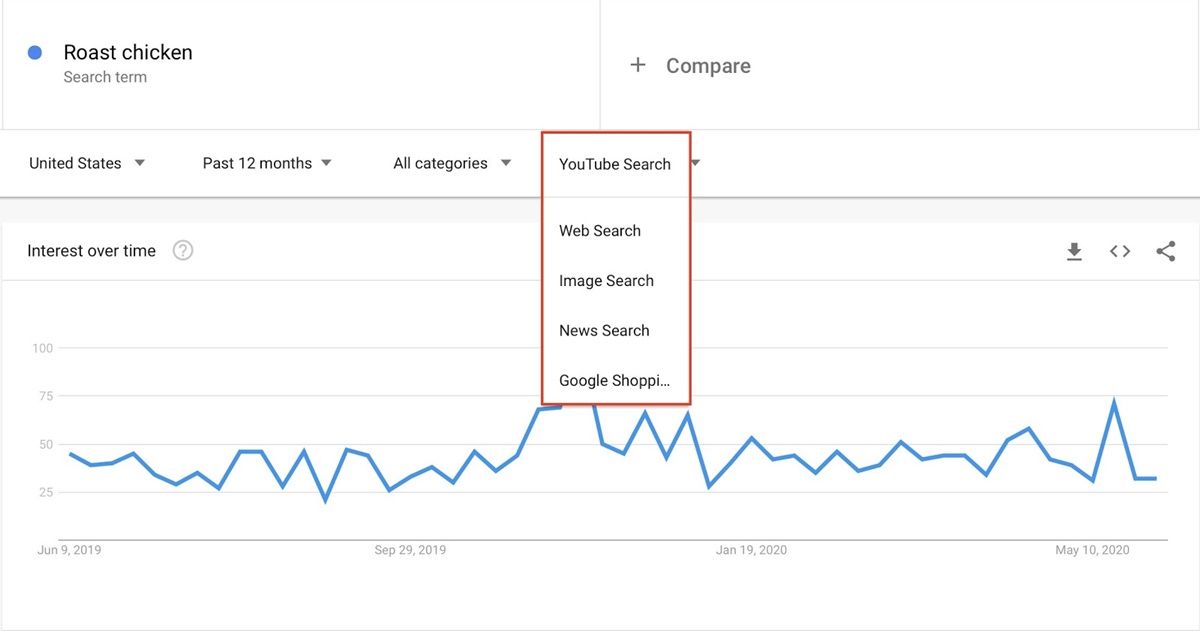
You can even search whether there’s a keyword on Google Images. If this is the case, consider making an infographic or an informative image on the subject. It’ll help you stand out in Google’s image search and get a lot of clicks on your website.
Use Google Trends To Analyze A Group of Keywords
Another unique feature offered by Google Trends is the ability to analyze multiple keywords simultaneously. So, if you have a few promising keywords to choose from and you can’t decide which one to take, you can compare them side by side and choose the one that shows a more positive trend. In the example below, the trend appears to be changing in favor of the keyword “drone camera.”
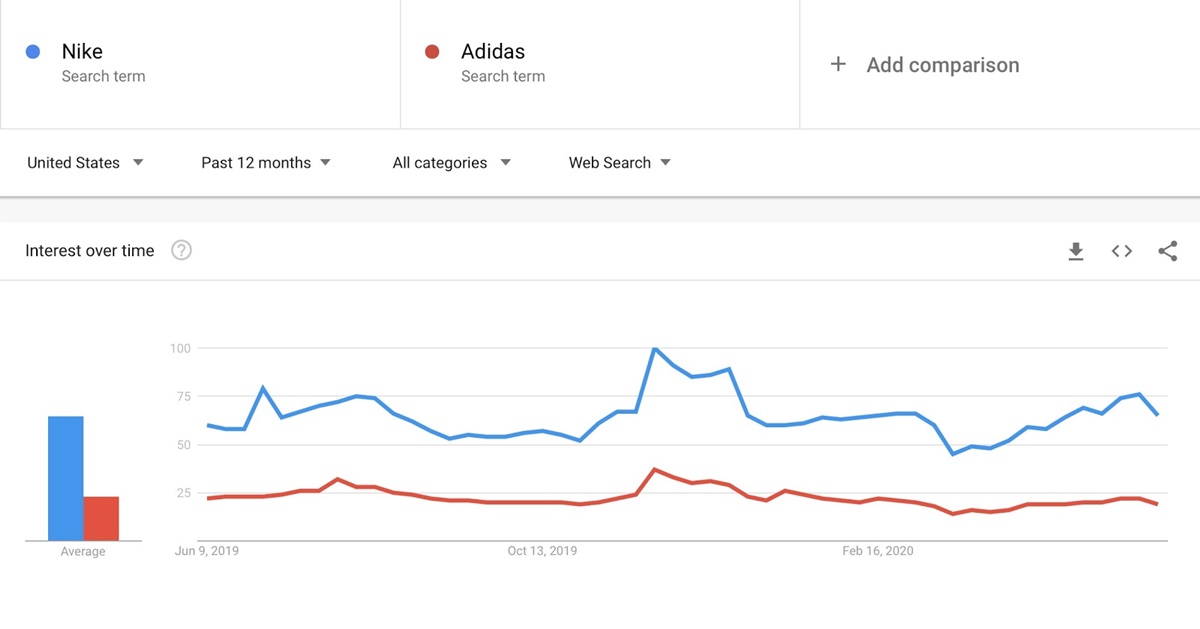
In addition, you can also use the app to learn how much traffic you would expect to get from a new keyword. Only take the keyword you rate, which already gives you traffic, and equate it to a new search query. This way, you can filter out keywords that are not likely to send you any traffic.
Final words
From helping you to prepare for seasonal trends to finding a fast-growing niche, Google Trends can provide you with lots of insights that can help your business acquire customers and generate revenues. You’ll be able to find complimentary products to expand your catalog or boost your blog traffic by updating popular SEO posts just in time for the peak season.
By applying the Google Trends practices in this article, you’ll be able to stay posted with the market and gain an edge over your competitors! I hope you have gained valuable insights into how to use Google Trends from this article. Please feel free to drop a comment for further discussion.
New Posts






